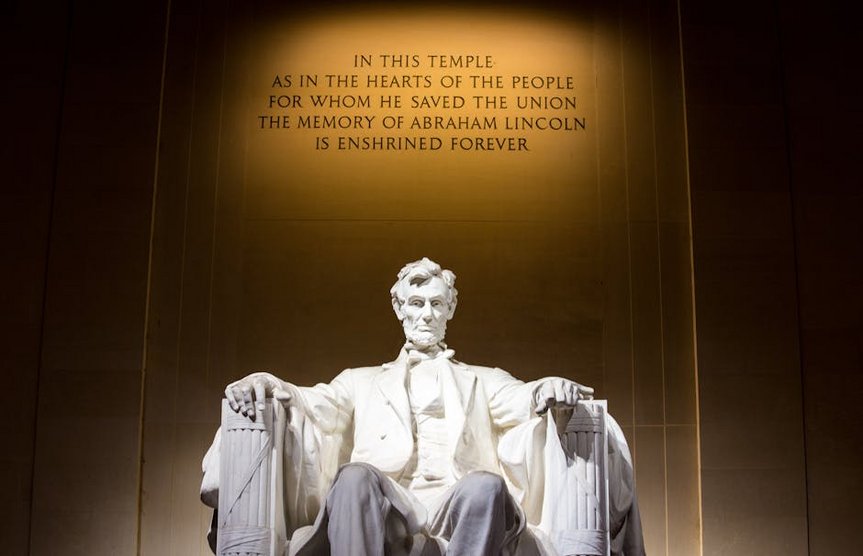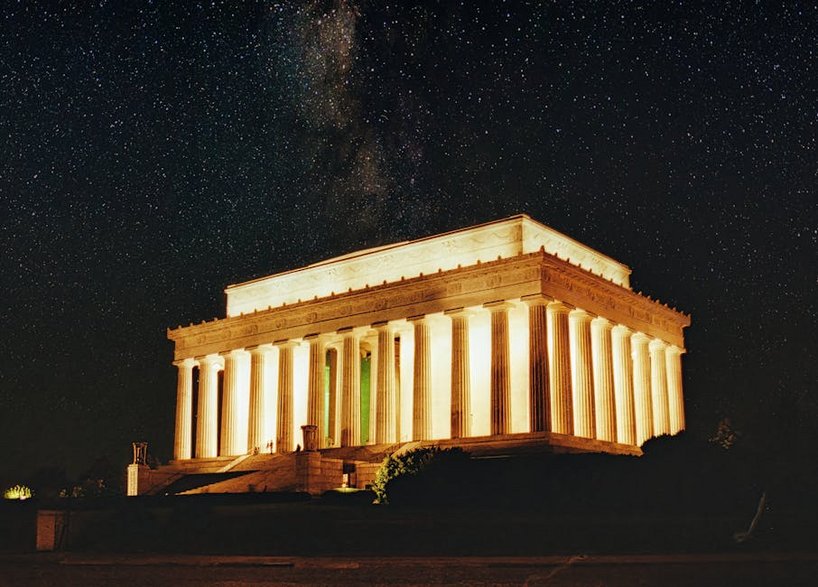Washington Lincoln Memorial: A Complete Visitor’s Guide
Visiting the Washington Lincoln Memorial is one of the most profound experiences you can have in the nation’s capital. Standing at the west end of the National Mall, this iconic monument honors the 16th President of the United States, Abraham Lincoln, and serves as a powerful symbol of unity, freedom, and democracy. As you approach the majestic marble structure, you’ll immediately feel the weight of history surrounding you. The Washington Lincoln Memorial isn’t just a tourist attraction—it’s a place of reflection, inspiration, and national pride where millions of visitors from around the world come to pay their respects. Whether you’re a history buff, architecture enthusiast, or simply seeking a meaningful experience, this guide will help you make the most of your visit to this American landmark. From practical tips on timing your visit to understanding the memorial’s historical significance, we’ve covered everything you need to know for an unforgettable experience at the Washington Lincoln Memorial.
Washington Lincoln Memorial Essential Information
Before you visit the Washington Lincoln Memorial, it’s crucial to understand its historical context and practical details. The memorial was dedicated in 1922, nearly 60 years after Lincoln’s assassination, and has since become one of the most visited sites in Washington D.C. The neoclassical design by architect Henry Bacon was inspired by ancient Greek temples, symbolizing the democracy that Lincoln defended. The building measures 189 feet long, 118 feet wide, and 99 feet tall, creating an imposing presence that commands respect. Inside, you’ll find the massive seated sculpture of Lincoln by Daniel Chester French, which is 19 feet tall and weighs 175 tons. The walls are inscribed with Lincoln’s Gettysburg Address and his Second Inaugural Address, powerful reminders of his leadership during the Civil War. The memorial is open 24 hours a day, with park rangers available from 9:30 AM to 10:00 PM daily to answer questions and provide historical context.
Washington Lincoln Memorial Historical Significance – What You Need to Know
- The memorial has been the site of numerous historic events, including Martin Luther King Jr.’s “I Have a Dream” speech in 1963, which drew over 250,000 people to the steps
- Construction took eight years (1914-1922) and cost $3 million at the time, equivalent to over $50 million today
- The 36 Doric columns represent the 36 states in the Union at the time of Lincoln’s death, with the names of the 48 states at the time of dedication carved along the attic walls
- Free admission makes the memorial accessible to all visitors, with no tickets or reservations required for individual visits
- Budget $20-40 for transportation if using rideshares or taxis, or $2-6 per person for Metro fares from most D.C. areas
- Guided tours range from free ranger-led programs to paid guided tours costing $30-60 per person for comprehensive National Mall tours
- National Park Service – Lincoln Memorial Official Information
- Destination DC – Official Tourism Site
Architectural Details – Key Features
The Washington Lincoln Memorial’s architecture is rich with symbolism and craftsmanship. The exterior is built from Colorado Yule marble, while the interior features Indiana limestone and Alabama marble for the ceiling. The memorial’s design incorporates several intentional features: the 58 steps leading to the chamber represent Lincoln’s age at the time of his death, and the columns tilt slightly inward to correct optical illusions. The statue of Lincoln itself shows the president in a contemplative pose, with one hand clenched representing his strength and determination, and the other open symbolizing his compassion. The ceiling features murals by Jules Guerin that represent principles Lincoln valued: unity, freedom, immortality, justice, and charity. Every element of the design contributes to the solemn, respectful atmosphere that makes the Washington Lincoln Memorial such a powerful experience.

Washington Lincoln Memorial Planning Your Trip
Planning your visit to the Washington Lincoln Memorial requires some strategic thinking to make the most of your experience. The memorial sees approximately 6 million visitors annually, with peak crowds during spring cherry blossom season (late March to early April) and summer months. For the most peaceful experience, consider visiting early in the morning (around sunrise) or later in the evening when the crowds thin and the lighting creates a magical atmosphere. The memorial is part of the National Mall and Memorial Parks, which means it’s managed by the National Park Service and admission is completely free. You should allocate at least 1-2 hours for your visit to fully appreciate the architecture, read the inscriptions, and absorb the significance of the space. Remember that security measures are in place, and large bags or backpacks might be subject to inspection, though the open-air design means there’s no formal security checkpoint like at some other D.C. monuments.
Best Time to Visit Washington Lincoln Memorial
The ideal time to visit the Washington Lincoln Memorial depends on your preferences for weather and crowd levels. Spring (April-May) offers mild temperatures and the famous cherry blossoms, but also the largest crowds. Summer (June-August) can be hot and humid, but early morning or evening visits are comfortable. Fall (September-November) provides pleasant weather and beautiful foliage around the Reflecting Pool. Winter (December-February) offers the smallest crowds and a stark, beautiful atmosphere, though temperatures can be freezing. For photography, the golden hours around sunrise and sunset provide the most dramatic lighting, casting beautiful shadows across the marble and creating stunning reflections in the Reflecting Pool. Major holidays like Memorial Day, Fourth of July, and Lincoln’s Birthday (February 12) often feature special events or ceremonies.
Washington Lincoln Memorial Budget Planning and Costs
Essential Preparation Checklist
Preparing for your Washington Lincoln Memorial visit will ensure a more enjoyable experience. Wear comfortable walking shoes as you’ll likely be exploring the entire National Mall area. Bring water, especially during summer months, as temperatures can soar and shade is limited. Consider downloading the National Park Service’s app for self-guided tour information and maps. If you plan to visit multiple monuments, a portable charger for your phone is essential for photos and navigation. For photography enthusiasts, a wide-angle lens will help capture the full scale of the memorial, and a tripod is permitted for nighttime photography. Check the National Park Service website for any temporary closures or special events that might affect your visit. Finally, bring a light jacket even in summer, as the marble interior can feel cool compared to the outside temperature.
Washington Lincoln Memorial Top Attractions and Activities
The Washington Lincoln Memorial offers more than just the famous statue and inscriptions. As you approach from the east, you’ll walk toward the memorial with the Washington Monument reflected perfectly in the Reflecting Pool—one of D.C.’s most iconic views. Inside the chamber, take time to read both of Lincoln’s speeches carved into the north and south walls. The north wall features the Gettysburg Address, while the south wall displays Lincoln’s Second Inaugural Address. Don’t miss the museum space in the basement level, which opened in 2021 and features exhibits about Lincoln’s legacy, the memorial’s construction, and its role in civil rights history. Outside, examine the two huge marble murals above the inscriptions that represent Lincoln’s principles of unity and brotherhood. Many visitors also enjoy finding the spot on the steps where Martin Luther King Jr. delivered his historic speech, marked by an inscription added in 2003.
Must-See Highlights at Washington Lincoln Memorial
Certain elements of the Washington Lincoln Memorial deserve special attention during your visit. The central statue of Abraham Lincoln is obviously the main attraction, but look closely at the details: the fasces (bundled rods) on the sides of Lincoln’s chair symbolize the power of the republic, and the statue’s gaze is directed toward the Capitol Building. The inscriptions of Lincoln’s speeches are remarkably preserved—run your fingers lightly over the letters to feel the history literally at your fingertips. The view from the memorial steps toward the Washington Monument and Reflecting Pool is arguably one of the most photographed vistas in America, especially beautiful at sunrise or sunset. Don’t overlook the two additional rooms flanking the main chamber that contain smaller exhibits and information panels. The memorial’s exterior also features subtle details worth examining, including the names of the states and their dates of admission to the Union carved above the columns.
Hidden Gems and Local Favorites
Beyond the obvious attractions, the Washington Lincoln Memorial holds several lesser-known features that enhance the experience. On the rear (west) side of the memorial, you’ll find a much quieter area with beautiful views of the Potomac River and Arlington National Cemetery—a perfect spot for contemplation away from the crowds. Look for the small marker indicating where Martin Luther King Jr. stood during his 1963 speech, located on the landing 18 steps below the main chamber. The basement level now houses a modern museum that many visitors miss, featuring interactive exhibits and artifacts related to Lincoln’s presidency and the memorial’s history. During evening visits, notice how the lighting inside the chamber creates dramatic shadows that change throughout the night. Local photographers often visit during full moons when the memorial is illuminated both by artificial light and moonlight, creating spectacular photographic opportunities that most tourists never experience.
Washington Lincoln Memorial Practical Travel Information
Navigating your visit to the Washington Lincoln Memorial requires some practical knowledge about transportation, accessibility, and facilities. The memorial is located at the western end of the National Mall, with the address 2 Lincoln Memorial Circle NW, Washington, DC 20037. The closest Metro stations are Foggy Bottom-GWU (Blue, Orange, Silver lines) and Smithsonian (Blue, Orange, Silver lines), both about a 15-20 minute walk away. Parking is extremely limited in the area, with most street parking restricted to residents only—using public transportation is highly recommended. The memorial is fully accessible with ramps and elevators available for visitors with mobility challenges. Restrooms are located in the basement level, and while there’s no food service at the memorial itself, numerous food trucks typically operate along nearby Constitution Avenue. The National Park Service offers free interpretive programs throughout the day, and audio guides can be downloaded to your smartphone before your visit.
| Transportation Method | Details | Cost (USD) |
|---|---|---|
| Metro Rail | Foggy Bottom or Smithsonian stations, 15-20 min walk | $2-6 per trip |
| Rideshare/Taxi | Drop-off at Memorial Circle | $15-40 from most D.C. locations |
| Bike Share | Capital Bikeshare stations nearby | $2 single trip + $0.05/min |
| Tour Bus | Multiple companies offer hop-on hop-off services | $40-60 per day |


